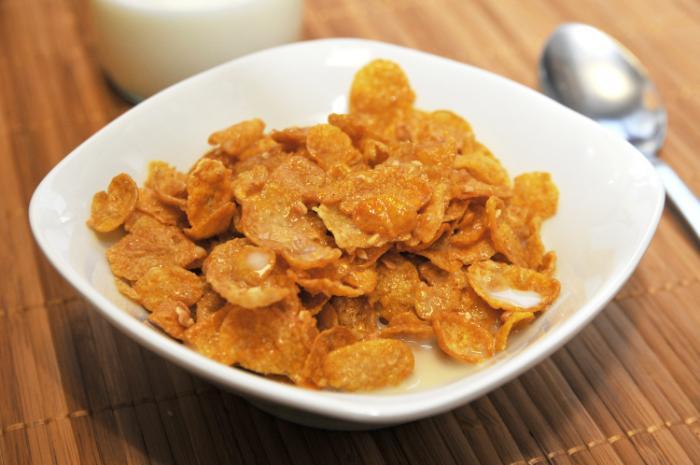Children’s Breakfast Cereals STILL Shockingly High in Sugar with Nearly Half of Products Receiving a Red Label – Ban Cartoons on Unhealthy Breakfast Cereal Products

- Cereals with packaging that may appeal to children are unnecessarily high in sugar, new survey warns
- Some cereals contain 40% sugar
- Only two products surveyed were low in sugar AND salt
- When it comes to salt, 65 cereal products received an amber label, with some products containing more salt per 100g than ready salted crisps
- Action on Sugar and Action on Salt are calling for a ban on packaging that may appeal to children for unhealthy cereal products
Breakfast cereal data 2019 [PDF 400KB]
A NEW survey by Action on Sugar and Action on Salt, based at Queen Mary University of London, analysed breakfast cereal products with packaging that may appeal to children such as cartoons and bright colours,[1] and has revealed an unexpected and alarming proportion of sugar and salt. The survey has been released as part of the first annual ‘State of Food’ report, The Broken Plate by The Food Foundation.[2]
The latest data demonstrates that an astonishing 49% of products surveyed (38 out of 77) still received a red label for their high sugar content (per 100g) – despite Public Health England’s Sugar Reduction Programme target for manufacturers to reduce sugar by 20% in popular products, including cereals, by 2020.
Of the 77 cereal products surveyed, Malt O Meal Marshmallow Mateys was the worst offender with a staggering 40% sugar (40.2g/100g), followed by Morrisons Choco Pillows which contains 36% sugar (36.1g/100g) and Sainsbury’s Frosted Flakes with 34% sugar (34g/100g). All three products have more sugar than Milk Chocolate Digestive Biscuits, which contain 25% sugar.[3]
For the products that are high in sugar, a single serving − based on their recommended portion size (30g) − would make up over a third of a child’s maximum sugar allowance (19g). However, many children eat much more than a 30g portion.
Worrying still, of the remaining products, 48% of products (37 of 77) received amber labels and only two received a green label for being low in sugar.[4]
When it comes to salt per 100g, 65 cereal products received an amber label and just eleven products received a green label. Malt O Meal Marshmallow Mateys which is top of the list again contains 1.6% salt – a higher salt concentration than ready salted crisps with 1.4% salt[5], followed by Kellogg's Unicorn Froot Loops with 1.13% salt.
Shockingly, there were only two products with green labels for both sugar AND salt in packaging that may appeal to children: Sainsbury's Puffed Wheat and Morrisons Super Smooth Porridge*
The recommended fibre intake for a child aged 5-11 years is 20g per day and we are told breakfast cereals are a primary source of fibre. Worryingly, 75 products (97%) contained 20% or less of the recommended daily requirement of fibre per serving and only one product provided more than 30% of the recommended daily requirement of fibre.
Products highest in sugar
|
Product Name |
Sugars (g) per 100g |
|
Malt O Meal Marshmallow Mateys |
40.2 |
|
Morrisons Choco Pillows |
36.1 |
|
Sainsbury's Frosted Flakes |
34 |
|
Morrisons Choco Crackles |
32.1 |
|
Tesco Choco Snaps* |
32.1 |
Products highest in salt
|
Product Name |
Salt (g) per 100g |
|
Malt O Meal Marshmallow Mateys |
1.6 |
|
Kellogg's Unicorn Froot Loops** |
1.13 |
|
Kellogg's Corn Flakes |
1.13 |
|
Kellogg's Rice Krispies |
1 |
|
Lidl Crownfield Rice Snaps |
0.88 |
Products lowest in fibre[6]
|
Product Name |
Fibre (g) per 100g |
|
Co-op Crispy Rice |
1.4 |
|
Tesco Pillows Milk Choco Pillows* |
1.5 |
|
Asda Choco Squares |
1.6 |
|
Aldi Harvest Morn Crisp Rice |
1.6 |
|
Asda Rice Snaps |
1.6 |
*Product(s) no longer available in packaging that may appeal to children compared to when the data was collected in November 2018.
**Product no longer available in supermarkets.
Registered Nutritionist Kawther Hashem, Campaign Lead at Action on Sugar based at Queen Mary University of London says: “Breakfast cereals should be a healthy choice, as they contain fibre and are fortified with vitamins and minerals; however our study shows that cereals with packaging that may appeal to children often contain unacceptable amounts of sugar.
“Why aren’t all cereal manufacturers reducing sugar levels as per Public Health England’s evidence based recommendations and actively marketing healthier (those with green traffic lights for fat, salt and sugar) breakfast cereals to parents and children? It is time they used their creative minds to sell their products responsibly.”
Katharine Jenner, Nutritionist and Campaign Director of Action on Salt based at Queen Mary University of London says: “As a parent, it is frustratingly hard to try and find food and drink products that are both nutritionally balanced AND appeal to your children.
“Instead we have something of a ‘Sophie’s Choice’, where we have to decide between high sugar products – putting our children at risk of obesity, type 2 diabetes and tooth decay, or high salt products – putting our children at risk of high blood pressure and cardiovascular disease later in life. It is ridiculous.”
Graham MacGregor, Professor of Cardiovascular Medicine at Queen Mary University of London and Chairman of Action on Sugar and Action on Salt says: “This survey shows that companies that make packaging of unhealthy products targeted at children are completely irresponsible. It is immoral that breakfast cereals companies can get away with it, it is time we made it easier for parents and only allow those cereals which carry a green label to be allowed to feature cartoons on packaging which may appeal to children.”
“In our view the government needs to ban use of such packaging on unhealthy products.”
Dr Alison Tedstone, Chief Nutritionist at Public Health England, said: “Breakfast cereals can be a healthy start to the day, but some contain far too much sugar. Children can reach half their maximum daily allowance of sugar by 10am.
“This is why the Government set out its expectation that breakfast cereal manufacturers lower the amount of sugar in their products by 20% by 2020. We have already seen reductions in some products, but there is clearly more progress to be made.”
Dr Giota Mitrou, Director of Research at World Cancer Research Fund says: “The amount of sugar and lack of fibre in many breakfast cereals aimed at children is worrying. Cereals high in sugar should not be marketed for children. Governments have an incredibly important role to play in protecting children from overexposure to unhealthy foods by restricting the marketing aimed at them.
“Children who are obese are more likely to be obese as adults which our research shows increases their risk of 12 different types of cancer, as well as a number of other serious health conditions.”
Ends
For more information contact: David Clarke @ Rock PR:
E: david@rock-pr.com M: 07773 225516
Join the conversation @actiononsugar
Notes to editors:
Action on Sugar is a group of specialists concerned with sugar and its effects on health. It is successfully working to reach a consensus with the food industry and Government over the harmful effects of a high sugar diet, and bring about a reduction in the amount of sugar in food and drink products.
This work was funded by the Esmée Fairbairn Foundation
[1] Survey details:
The survey, conducted in November 2018, included the collection of sugar, salt and fibre data per 100g and per serving for breakfast cereals that may appeal to children (such as those with licenced and brand equity characters, bright colours, shapes and cartoons), using the FoodSwitch data collector app in-store.
The products mentioned in this press release have been checked in February 2019. A few products are unavailable in the packaging that may appeal to children anymore and one product was unavailable in supermarkets anymore.
FoodSwitch UK app helps you find healthier choices – simply scan the barcode of your regular brand to get colour coded nutrition information and see a list of healthier alternatives. Download the app http://www.actiononsalt.org.uk/foodswitch/
[2] The Food Foundation, State of Food, Broken Plate, 2018. – https://foodfoundation.org.uk/wp-content/uploads/2019/02/The-Broken-Plate.pdf
[3] Tesco Milk Chocolate Digestive Biscuits 300G – 25g sugar per 100g https://www.tesco.com/groceries/en-GB/products/254924572
[4] The serving size ranged from 30 to 45g. 84% of products state a typical serving is 30g. We assume this is typically smaller than the amount regularly consumed, particularly by older children.
[5] Walkers Ready Salted Crisps 6 X 25 G – 1.4g salt per 100g https://www.tesco.com/groceries/en-GB/products/254926800
[6] We created a scoring system for fibre:
≥10g fibre per 100g received green light
≥5g and < 10g fibre per 100g received amber light
<5g fibre per 100g received red light


